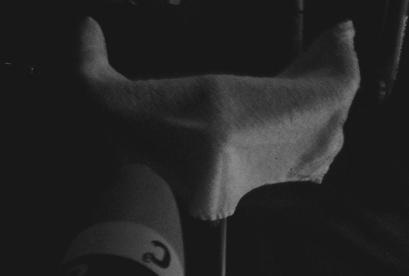Cycling and the Sunk Cost Fallacy
As the weather makes a turn for the better here in southern Ontario, I’d like to take a minute to look back on the “offseason” as it fades into the rearview. For those who follow me (or other Bateman’s riders) on Strava, you will have seen lots of indoor #SpinShack riding in your feed this winter. Many more have built their own pain caves at home, joining TrainerRoad, the Sufferfest, or building their own offseason training plans to get through the snowy and salty winters. No matter your method of choice for staying fit over the winter, there is one commonality – lots of time to sit in one place and think.
—
In cycling, some everyday tropes and truisms also hold true:
- Consistent hard work put in over time leads to better results in critical moments.
- “Take better care of your belongings, and they take better care of you.”
- Eat your vegetables.
However, some tenets of life and living do not appear in cycling – in some instances, the exact opposite could be true. The sunk cost theory, in economics, for example.

Yes, I’m still in my bitmoji phase.
The sunk cost theory, or fallacy, says that we should not consider previous expenses and outlays in determining our next course of action – we should only look forward, and make our decision based on the merits of the objective evidence that lies in front of us. A classic example of humans falling victim to the sunk cost fallacy is public works projects that go horribly over budget, resulting in good money (that could be used currently, or in the future, for any purpose) being thrown after bad money (already spent, and considered to have been wasted).
This human impulse to mitigate losses and not admit failure is how we’ve ended up with Boston’s Big Dig, basically all of Bombardier, the billion-dollar Gun Registry, Public Services and Procurements Canada’s Phoenix Pay System, and Premier Peckford’s Pickle Palace. When considering future action, humans place far more emphasis than they should on previous action and resource allocation that can no longer be undone.
—
So, we were talking about indoor winter training, and all the time that it affords for introspection. The specific drill that led me to this particular economics-based rumination was Stand-Attack-Hold. In this drill, you spend 30 seconds standing at tempo pace, then continue standing while attacking above threshold for another 30 seconds. Finally, you sit and hold that above-threshold effort for one minute. You then do two minutes of active recovery, and repeat the whole thing 4 more times.
The stand-attack-hold pattern is meant to simulate an attack that you might launch upon reaching the upper portions of a climb. Visualize along with me:
- Standing at tempo pace, you are climbing with the pack.
- Then, with the top of the climb in sight, you attack!
- Having broken away from the bunch, you crest the climb, and you have a gap. The bunch has their nose in unbroken air, and they will need to work hard to bridge back to you. Your job now is to hold that above-threshold effort, to maintain your gap and make your attack stick.
After running this drill over a few times, you start to fatigue. It gets harder and harder to hold that effort for a minute once you sit down having crested the hill (in your mind – remember, you’re at spin and you’re physically travelling at 0 km/h for 2.5 hours). You legs burn, your lungs shudder. You’re tired. You want to nap.
(^though the whole video is hilarious, skip to 4:02 for the relevant portion)
This is where my mind turned to the fiscal realm: “My legs are on fire, I’m pooched! This kind of reminds me of Year 1 Microeconomics [I knew that course would come in handy!]. I should not fall victim to the sunk cost fallacy – I shouldn’t let all of the work I’ve done to get to this point fool me into thinking that continuing this leg-roasting pace is a good idea. I should instead think about my future prospects, and realize that I can’t keep this up. Come on, that old effort is a sunk cost!”
But, obviously, I knew that I was wrong. Because, as I considered for the remainder of the intervals that Thursday night, in cycling the sunk costs matter. It is not a fallacy to consider them. While it is true that in a race you would not spend 20 minutes attacking five times (or, at least you should not…), you would attack once while feeling as exhausted as you do in the fifth interval of the drill. And if you did, that’s it – you’ve pushed your chips to the middle, taken out all the matches you’ve got left and begun striking them at will, and you are telling your competitors “This is everything I’ve got, come at me.”

The view as I considered economic theoria… (theorem?)
As I concluded, riding in the darkness listening to the blasting music and watching a Women’s XC MTB World Cup race, in life, when you spend some dollars, they’re spent. You should move on to the next dollar-spending decision, and not think about previous dollars spent. In cycling, however, your only currency once the flag drops is your effort on the day, and the fact that you’ve burned some matches to start an attack dictates that you continue to push yourself until that attack is successful (or, fails miserably… an outcome that is all too common, unfortunately).
—
French cycling great Bernard Hinault is famed for having said “As long as I breathe, I attack.” and I’ve always enjoyed that sentiment. If I know anything about revered famous quotes from legendary figures, it is that they’re always improved by being hacked apart and repurposed to make concluding points for amateur bloggers. And thus, I proffer this advice for your coming cycling season: “As long as you attack, attack – and don’t let memories from long-ago first year university classes convince you otherwise.”
